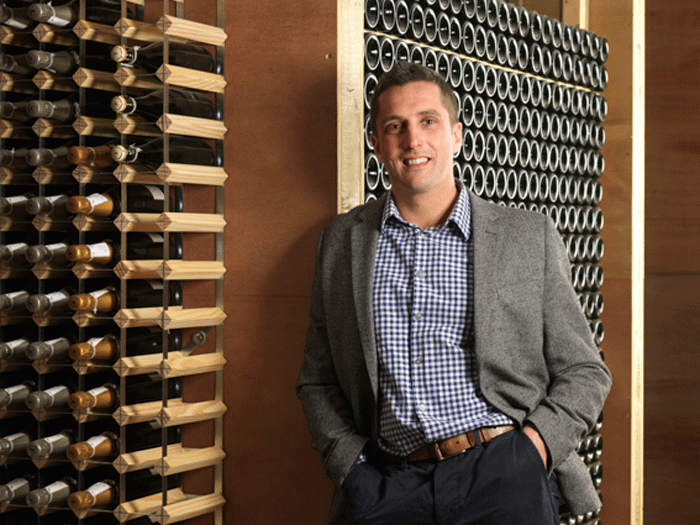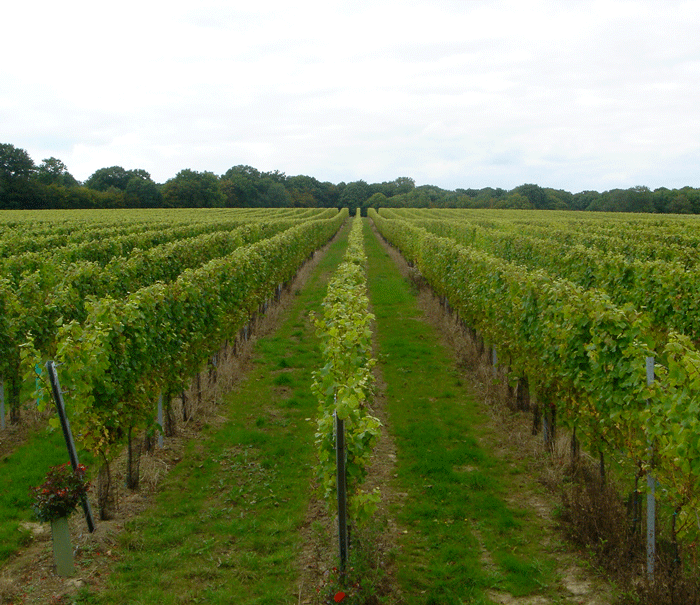Notes from the vineyard: a lot of bottle
Author: Emily Miles
The crop we’re bottling is the 2013 harvest, which we brought in last October. It was a bumper year which we were grateful for: we have had a couple of lower harvests recently so the good crop t means we can replenish our cellars. We picked a bit later than usual because, although we had a great summer which allowed us to fully ripen the grapes, we had quite a slow start and a cold spring. Once you start getting into October and November, there are more challenges and a greater risk of rain coming – you have to choose your window for picking more carefully.
We were extremely happy with the quality of the grapes that came in. It takes a while to work out exactly what you’ve got in the cellar and to get a real picture of what the vintage is looking like. In Over the past couple of months it has become apparent that the wines are shaping up really well – a nice balance of good, ripe acidity and lots of interesting flavour profiles.
As a winemaker, having different vineyards to work with allows me to have a bigger, broader palate and to be more creative. It opens up opportunities for trying new blends and to create more nuances and subtleties in the wine so the exciting thing for me at the moment is that this is the first year that we’ve made wines from our vineyards over in Sussex. It has quite different soils from those we’ve got here in Kent: it has more chalk-based, classic downland soil, so its wines have a greater minerality, are leaner and more linear. We cultivate the same grape varieties in both locations, but – rather than using the Burgundy clones that we have a lot of in Kent, in Sussex there are more Champagne clones.
The key thing with clones – and we have lots of types – is that different ones bring different flavours. Some of them have looser bunches, some have bigger bunches, some smaller berries, and so on, which means they all bring different things to the blend.
So, to bring us up to date, over the past six months or so, the wine has been in tank and has gone through its malolactic fermentation which started during harvest. We try to co-inoculate (to add the bacteria at the same time as the yeast) which is important as it allows both a share of all the nutrients in the wine. The fermentation also keeps the temperature nice and warm which the malo bugs like. Some of the tanks take a little longer than others and it generally takes a couple of months to get them all through. When the New Year arrived, we were in a position to start thinking about putting the blends together, which involves a lot of blending trials and a lot of deliberation. Once we have decided on our final blends we stabilise the wine (which means chilling it down to -4 degrees) to stop any crystals forming and then do a bit of filtration to make it nice and clear. And then, after all this work, we are ready to bottle it.
Today I’ve been trying to get the cultures ready and the yeasts in a good state so that we will get a nice second fermentation. We use specialist sparkling wine yeasts – whereas normal yeasts in a still white wine making process are pretty resilient, ours need to be especially so. When you are taking a sparkling wine through its secondary fermentation, you’re adding the yeast to a wine which is quite high in acidity compared to most, and which also has a reasonable amount of alcohol – both factors which make it quite difficult for the yeast to metabolise all the sugar. You’re also keeping the wine in a reductive environment full of carbon dioxide (i.e. the bottle), so it’s tricky for them, therefore you need a nice, healthy yeast culture.
We rehydrate the yeast very slowly, and then we make a baby culture that allows the yeast to gently acclimatise to a wine environment. Over approximately 48 hours we turn the small, baby culture into a larger, mother culture of around a hundred litres. The culture is at its optimum when it becomes lively with large numbers of yeast, then we can begin bottling. Having a large number of healthy, happy yeast ensures that they will finish off the fermentation in the bottle.
Once the bottling line swings into action, we have to have everything ready: the wine, the cultures, the bottles. As soon as possible after the wine has gone into bottle, we need to stack it in our temperature-controlled cellar to keep it in a nice stable condition throughout the year. The temperature is important – hot weather accelerates the maturation process (which might introduce flavours we don’t want) while cold weather can slow down or even stop the fermentation.
The wine will remain in our cellars for at least three years, and its secondary fermentation can take up to a month. What we want is a nice, slow fermentation. If it goes too quickly, you might end up with larger, aggressive bubbles in the wine. We want a slow, gentle fermentation so that all the carbon dioxide is slowly dissolved into the wine and so when you pour your glass in a few years’ time, you’ll have lovely thin beads of bubbles and a delicious, soft mousse.
May has been stunning here so far – we have had great weather conditions and an excellent start to the year. We don’t want to get ahead of ourselves (because, until the grapes are taken in at the beginning of October, nothing is certain) but at the moment we are probably a little ahead of where we are on average. Our lovely, sunny weather has been interspersed with a few days of rain – especially important to help bed the new vines into the soil. So far, so good for the season at Gusbourne.
To try Gusbourne’s wines, go to bbr.com, for more information on the Estate, go to gusbourne.com.




